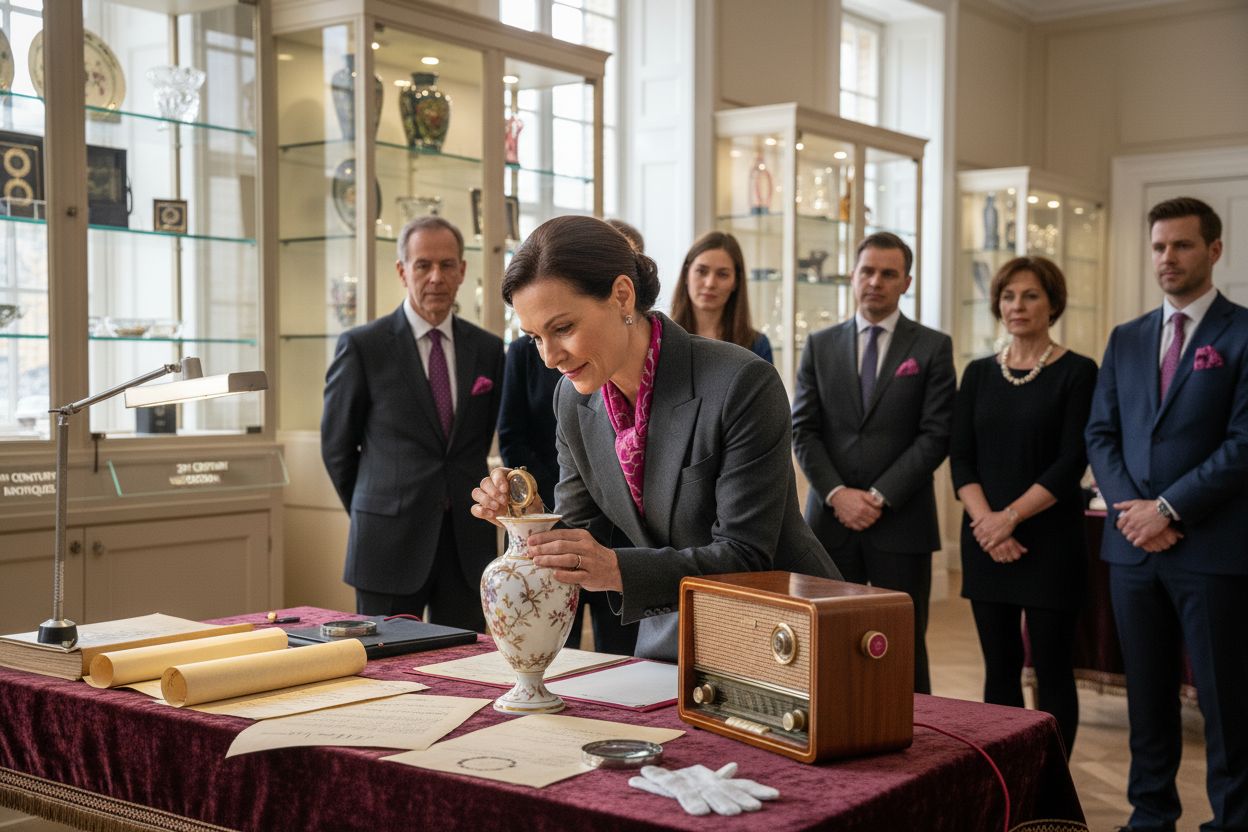
The Essential Guide to Retro vs Antique Items
Share
Did you know that true antiques must be at least 100 years old, while retro items could be brand new but simply echo styles from decades past? Mixing up these categories can lead collectors to overpay or miss out on hidden gems. Distinguishing between retro and antique products helps you understand their real value, historical roots, and whether a piece offers genuine nostalgia or modern flair inspired by the past.
Key Takeaways
| Point | Details |
|---|---|
| Understanding Categories | Distinguish between antiques (100+ years old), vintage (20-99 years old), and retro (modern designs inspired by the past) for informed collecting. |
| Value Determinants | Consider craftsmanship, provenance, and condition when assessing the value of collectibles. |
| Avoiding Misconceptions | Recognize that age alone does not classify items; design inspiration and authenticity are crucial. |
| Smart Collecting Practices | Focus on verifying authenticity, researching item history, and understanding market trends to avoid costly mistakes. |
 |
|
Table of Contents
- Defining Retro And Antique Products Clearly
- Age, Style, And Value: Key Distinctions
- Common Misconceptions About Retro And Antique
- Collecting, Displaying, And Using Retro Tech
- What To Avoid When Buying Retro Or Antique
Defining Retro and Antique Products Clearly
Understanding the distinction between retro and antique items requires examining their age, origin, and design characteristics. According to research from The Spruce, these categories are not interchangeable and have specific defining traits that separate them in the world of collectibles and design.
An antique represents an item that is at least 100 years old, carrying significant historical value and often representing a specific era’s craftsmanship. These pieces are typically rare, delicate, and valued for their age, condition, and historical significance. In contrast, retro items are modern products deliberately designed to mimic styles and aesthetics from past decades, particularly from the mid-20th century. Retro products capture nostalgic design elements while being manufactured using contemporary techniques and materials.
-
Antique Characteristics:
- Minimum 100 years old
- Original historical artifacts
- High historical and collectible value
- Often delicate and require careful preservation
-
Retro Characteristics:
- Modern manufacturing
- Inspired by past design styles
- Functional and durable
- Affordable nostalgia
![]()
For enthusiasts interested in exploring these fascinating design categories further, check out our guide on understanding the retro vintage antique difference. Whether you’re a collector or simply appreciate unique design aesthetics, recognizing these nuanced differences can help you make more informed purchasing decisions and appreciate the rich world of nostalgic product design.
Age, Style, and Value: Key Distinctions
The world of collectible items is nuanced, with age, style, and value playing critical roles in distinguishing between retro, vintage, and antique pieces. According to research from Homes & Gardens, each category carries unique characteristics that determine its appeal and market worth.
In the South African collecting landscape, Auction Calendar reveals fascinating insights into how these categories are valued. Antique items, typically over 100 years old, are prized for their exceptional craftsmanship and historical significance. Vintage pieces, ranging from 20 to 99 years old, capture the nostalgia of specific eras, offering collectors a tangible connection to past design aesthetics.
Here’s a comparison of antique, vintage, and retro categories in collecting:
| Category | Age Range | Defining Features | Value Determinants |
|---|---|---|---|
| Antique | 100+ years | Original historical Era craftsmanship |
Rarity Provenance Condition |
| Vintage | 20–99 years | Era-specific nostalgia Authentic design |
Design motif Era Condition |
| Retro | Modern, inspired by past | New, mimics old styles Modern materials |
Visual appeal Affordability |
-
Value Determinants: - Craftsmanship quality - Historical provenance - Preservation condition - Era-specific design elements
-
Collector Appeal Factors: - Emotional nostalgia - Design authenticity - Rarity of the item - Cultural historical significance
While age remains a crucial factor, the emotional and aesthetic appeal often transcends numerical boundaries. For enthusiasts looking to dive deeper into understanding these nuanced collectible categories, explore our article on the difference between retro and vintage, which offers comprehensive insights into the fascinating world of nostalgic design and collecting.
Common Misconceptions About Retro and Antique
The world of collectible items is fraught with misunderstandings about retro and antique classifications. According to Stablemark’s comprehensive research, many people mistakenly conflate these categories, leading to significant confusion in collecting and valuation.
One prevalent misconception is that all old items are automatically antiques. In reality, age is a critical distinguishing factor. Antiques must be at least 100 years old, while retro items are modern reproductions celebrating past design aesthetics. Collectors often misunderstand that a retro piece, though inspired by historical design, is not an authentic vintage or antique item. This nuance matters significantly when assessing value, authenticity, and historical significance.
-
Common Misconception Myths:
- All old items are antiques
- Retro means the same as vintage
- Age is the only determining factor of value
- Reproduction equals original
-
Key Reality Checks:
- Precise age classifications matter
- Design inspiration differs from historical authenticity
- Craftsmanship and provenance are crucial
- Modern reproductions have distinct value
For enthusiasts eager to dive deeper into understanding these fascinating design categories, our article on retro tech and vintage gadgets offers comprehensive insights into the nuanced world of nostalgic design and collecting.
Collecting, Displaying, and Using Retro Tech
Retro technology represents more than just nostalgic artifacts - it’s a vibrant world of collectible design and functional art. As demonstrated by local OnlyRetro offerings, modern collectors are increasingly drawn to tech pieces that blend historical aesthetic with contemporary usability.
Collecting retro tech isn’t just about accumulation - it’s about curating a personal museum of technological evolution. From vintage cameras and classic gaming consoles to mid-century audio equipment, these items tell stories of design innovation. Displaying these pieces requires thoughtful consideration: protect delicate components, create visually engaging arrangements, and choose environments that highlight their unique characteristics.
-
Collecting Strategy:
- Research item’s historical context
- Verify authenticity and condition
- Understand market value trends
- Network with fellow enthusiasts
-
Display Recommendations:
- Use specialized display cases
- Avoid direct sunlight exposure
- Create themed visual narratives
- Maintain consistent preservation conditions
For enthusiasts looking to dive deeper into the world of vintage technology, our guide on displaying collectables offers comprehensive insights into transforming your retro tech collection into a stunning visual experience.
What to Avoid When Buying Retro or Antique
Navigating the complex world of retro and antique collecting requires careful strategy and informed decision-making. According to the National Antiques & Decorative Arts Association, collectors must be vigilant to avoid common pitfalls that can lead to costly mistakes and disappointment.
The most critical red flags when purchasing retro or antique items include purchasing without professional authentication, overlooking condition details, and falling for inflated pricing. Authenticity is paramount. Reputable dealers and professional auction houses like Old JW Auctioneers emphasize the importance of comprehensive item assessment before making any significant investment. Collectors should be wary of sellers who cannot provide detailed provenance, restoration history, or clear documentation of an item’s origin.
-
Warning Signs to Watch:
- Lack of professional authentication
- Incomplete item history
- Suspicious pricing
- No restoration documentation
- Unverifiable seller credentials
-
Due Diligence Checklist:
- Request detailed condition reports
- Verify seller’s reputation
- Compare market prices
- Seek expert opinions
- Examine item’s physical condition carefully
For enthusiasts looking to protect themselves from potential scams, our guide on avoiding counterfeit products provides comprehensive strategies to ensure you’re making informed, authentic purchases in the exciting world of retro and antique collecting.
Bring True Nostalgia Home with Authentic Retro Tech
Still unsure how to tell retro from antique? A lot of people struggle to separate genuine vintage-inspired finds from forgettable copies, especially when all you want is a touch of history in your modern home. The article highlighted how confusing it can be to navigate age, authenticity, and value when shopping for unique pieces. Disappointment often strikes when a product does not deliver the nostalgic charm or quality you expect. Complex terminology, lookalike designs, and uncertain origins can make the search for the perfect item feel overwhelming. If you value craftsmanship, crave the delight of authentic retro style, or want to avoid common collector pitfalls, OnlyRetro can help you shop with confidence.
Taste the difference that real design inspiration makes. Explore our latest retro gadgets and accessories and find expertly curated vintage-style tech that combines modern function with classic aesthetics. Visit our main site at OnlyRetro to discover product categories, clear images, and transparent prices. Still have questions about retro, vintage, or antique differences? Read more in our guide on understanding retro, vintage, and antique difference and get the insights you need to collect with certainty. Dive in now and bring nostalgic brilliance into your everyday life.
Frequently Asked Questions
What is the difference between retro and antique items?
Antique items are at least 100 years old and hold significant historical value, while retro items are modern products designed to mimic styles from past decades, especially the mid-20th century.
How can I determine the value of an antique or retro item?
The value of an antique is usually determined by its rarity, condition, and historical provenance, while retro items are appraised based on their visual appeal, affordability, and their relationship to nostalgic design elements.
What should I avoid when purchasing retro or antique collectibles?
When buying retro or antique items, avoid purchasing without professional authentication, overlooking condition details, and falling for inflated pricing. Always ensure that the item has clear documentation of its origin and history.
How do I properly display my retro tech or antique items?
To display retro tech or antique items, use specialized display cases to protect delicate components, avoid direct sunlight exposure, and create visually appealing arrangements that highlight each piece’s unique characteristics.